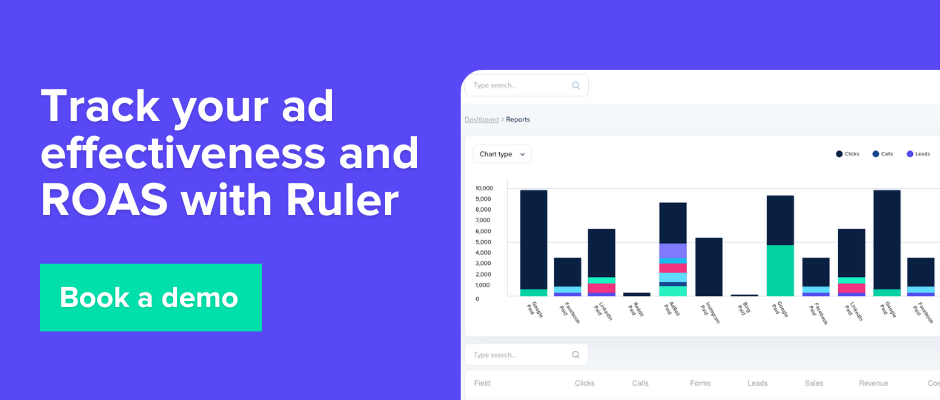We all know Instagram is the perfect platform for reaching potential customers. But tracking its performance isn’t easy. Keep reading to find out how to track Instagram traffic using Google Analytics.
Social media platforms have become an essential part of our daily lives.
The data backs it up. The average user spends 2 hours and 31 minutes daily on social media.
Amongst the many platforms available, Instagram stands out as one of the most popular.
With millions of active users, it’s quickly become a go-to platform for advertisers looking to reach their target audience and drive more leads.
While Instagram is an amazing source for traffic and leads, it’s not the easiest platform to measure out of the box.
But there are workarounds.
In this blog, we will explore the different ways businesses can track their Instagram traffic in tools like Google Analytics and gain valuable insights into their ad performance.
Here’s what you’ll learn:
💡 Pro Tip
Meta has seen extreme changes to its tracking and attribution following the iOS 14.5 update. Many marketers are struggling to attribute leads and sales back to Facebook and Instagram. But by implementing a marketing attribution tool like Ruler, you can bypass the iOS issues and get a clear view of your ROI and ROAS.
Book a demo to learn more
You can Instagram Insights to traffic and followers clicking through to your website. We’ll walk you through Instagram Insights first. Then we’ll show you how to track Instagram traffic in Google Analytics.
You can use Instagram Insights to traffic and followers clicking through to your website. We’ll walk you through Instagram Insights first. Then we’ll show you how to track Instagram traffic in Google Analytics.
You can quickly check how many people are clicking external links on your account directly on Instagram.
Firstly, remember that you’ll need a business account to be able to view this data. If you have a business account already, then head to your profile.

From there, select ‘Professional dashboard’. Under ‘Insights’ click on ‘Accounts reached’.
In this section, you’ll discover “External link taps,” where you can track the number of clicks on any link across your Instagram account, including those in your bio and stories.
While Instagram goes part way to give you your traffic data, it’s only half of the story. So you can see clicks, but what does that actually mean?
These users could click and bounce right off your website. Or, they could convert straight away into a sale. How are you working that out?
Google Analytics offers a simple solution to this problem.
With Google Analytics, you can track the traffic coming from your Instagram, monitor user engagement and compare performance against other traffic sources, keywords, etc.
But before you start tracking Instagram traffic in Google Analytics, there are a few steps you need to take.
These include:
The first step is to add UTM tags to your links on Instagram. This doesn’t just work for Instagram. It works for any external source that you use to drive visitors to your website.
UTM tagging allows you to set details against a URL, such as the source e.g. social, and the campaign. This lets you segment your data in Google Analytics and view specific link clicks for one URL.
Related: How to accurately track link clicks in Google Analytics
If you don’t add UTMs to your links, your Instagram traffic will show up as direct in Google Analytics. That’s because when you click a link in the mobile application, Instagram opens the link directly on your mobile browser.
Related: What is direct traffic in Google Analytics?
But with UTM tagging, you can make sure that Google Analytics logs traffic exactly as you want it to and that it’s accurate 100% of the time.
Here’s a quick guide on how to set up a tracked link using Google’s URL builder.
First, head to Google’s URL builder.
From there, add your URL into the box called ‘Website URL’. For campaign source, you’ll want to highlight the referrer. For example, is it coming from Facebook, Google, or another particular website?
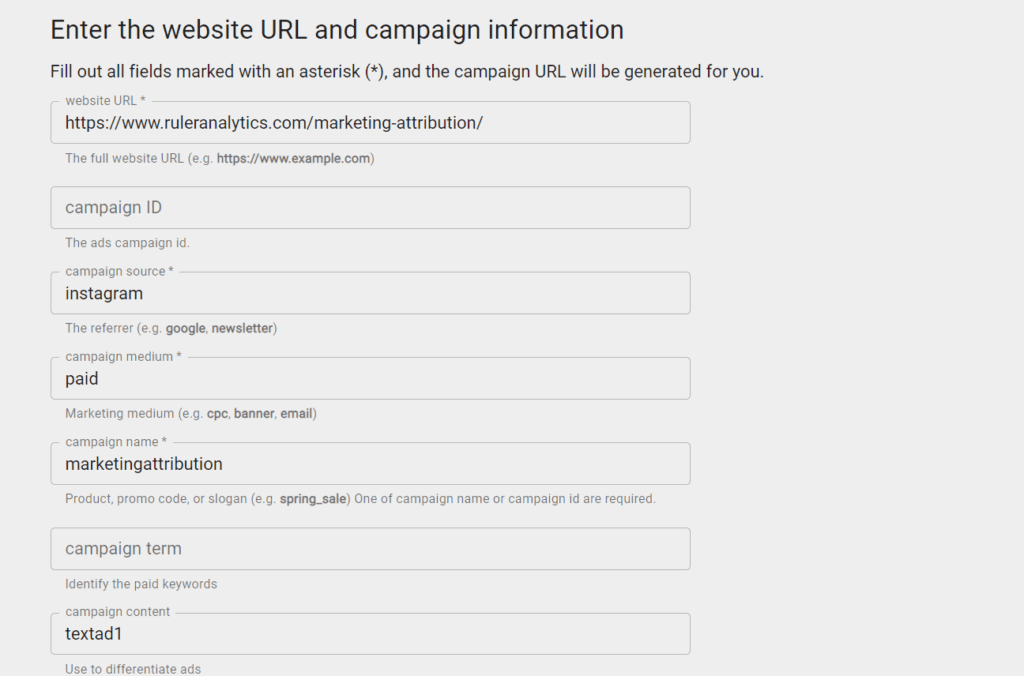
Then, select your medium. This refers to how the user arrived at your link. For example, organic, social, paid etc.
Next, add in your campaign name. This will allow you to group web performance based on a particular campaign name.
You then have campaign terms and content to break down differences between your links further. For example, if you were using this link on a paid post, you might use terms and content to differentiate from an A/B test.
And there you have it, your complete unique URL.
Now that we’ve set up our UTM, it’s time to add it to Instagram.
In this example, we’re going to add a UTM to one of our Instagram ads.
To add trackable links to your Instagram ad, simply scroll down to “destination“ and enter your UTM link into the field labelled “website url“.
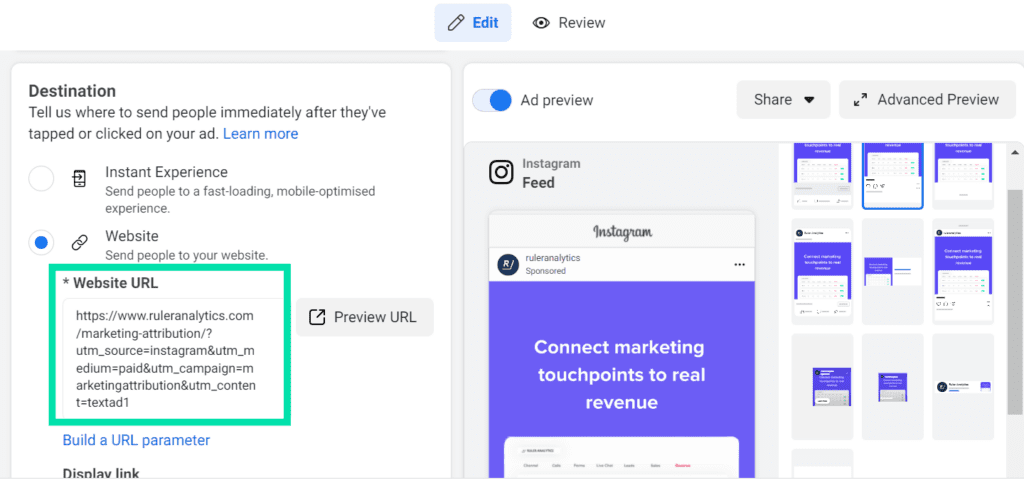
Once you’ve added the UTM to your Instagram posts, you’re ready to start tracking its performance in Google Analytics.
Your Instagram traffic will get pulled in automatically by Google Analytics 4 as long as you’ve set up your UTM codes correctly.
To check, go to Reporting > Acquisition > Traffic Acquisition.
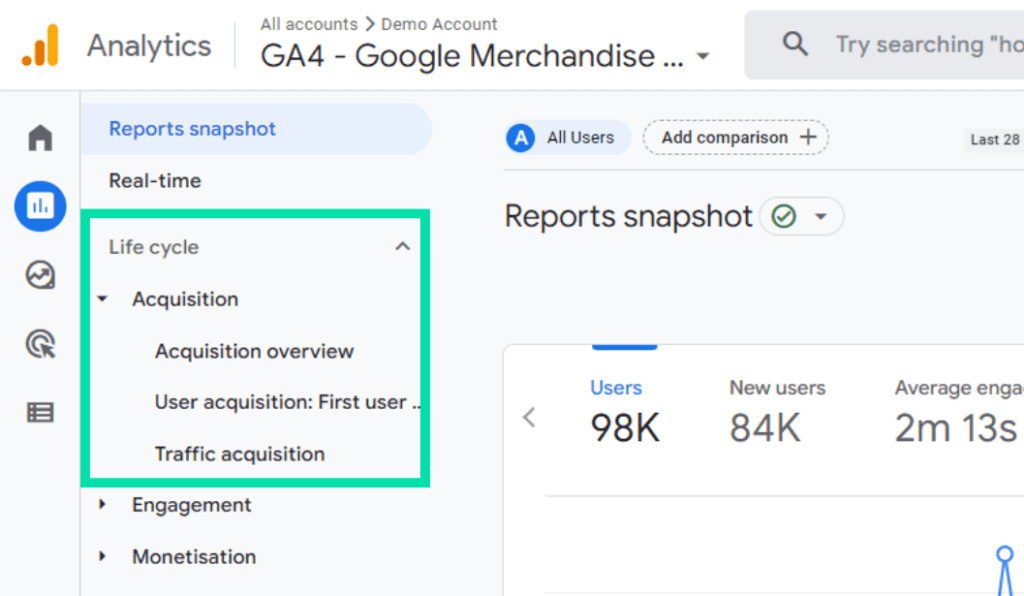
From the drop-down, change the channel group to view things like:
You can also use custom templates in Explorations to create various types of visualisations, including bar charts, line charts, pie charts, and tables, to help you understand your data.
Tracking Instagram in Google Analytics is the first step towards a complete understanding of your website and its visitors. But there are a few significant issues with Google Analytics that we haven’t addressed yet.
Google Analytics uses first-party cookies to capture data on your Instagram traffic.
You can see valuable data like pageviews and key events, but you can’t connect them to specific email addresses or phone numbers.
This anonymity poses a problem.
You can’t definitively say which Instagram clicks convert into leads, and ultimately, deals. .
Knowing where clicks originate (Instagram) is a good start, but the real value lies in understanding how those clicks translate into revenue.
Without tying website actions to identifiable leads, it becomes difficult to prove Instagram’s effectiveness in generating pipeline and optimise for maximum impact.
Google Analytics primarily tracks clicks from Instagram, not impressions. This means it misses a crucial part of the story, especially for top-of-the-funnel campaigns on Instagram.
These campaigns might not directly translate into immediate clicks or conversions, but they play a vital role in brand awareness and influencing the customer journey.
Imagine that eye-catching Instagram post a potential client saw a few days ago. It might not have driven them to click a link immediately, but it could have planted a seed, nudging them towards your brand when they finally needed your product or service.
Google Analytics wouldn’t capture this initial touchpoint.
Meta’s view-through attribution for Instagram attempts to address this by giving credit to impressions that lead to conversions within a day.
This can be useful, but it falls short for B2B sales cycles.
Complex B2B purchases often involve longer research and consideration periods, extending far beyond 24 hours.
Additionally, its reliance on third-party cookies makes it short-lived, as Google plans to phase them out later this year.
GA4 offers two main attribution models: last-click and data-driven.
The last click, on the surface, seems straightforward: it assigns credit for a conversion to the last touchpoint a user had with your marketing efforts before converting.
However, this approach fails to capture the complexities of today’s multi-touch customer journeys.
Imagine someone seeing your eye-catching product on Instagram, and then researching it further through a Google search before finally buying.
Last-click would credit the sale entirely to the search, neglecting the crucial role Instagram played in sparking initial interest.
Data-driven attribution, while attempting to address this by distributing credit across all touchpoints, introduces another concern: transparency.
The algorithm behind this model remains a bit of a black box, raising questions about how precisely credit is allocated.
Another shared limitation of both models is the 90-day lookback window.
Conversions happening beyond 90 days after an initial click from Instagram often go misattributed as direct traffic or organic search.
This can be a significant drawback for businesses with longer decision-making cycles, potentially obscuring the true impact of your Instagram efforts.
While Google Analytics tracks clicks and conversions, it doesn’t reveal Instagram’s specific impact on your sales funnel and revenue.
For that, you’ll need a more sophisticated approach.
More specifically, you need a dedicated attribution platform.
To show you how attribution works, we’re going to use Ruler as an example.
Ruler is a marketing attribution tool that allows you to connect your website to your customer database and marketing tools.
Once your tracking links are set up, Ruler can monitor each and every visitor to your website and collect data on their session data and referrals.
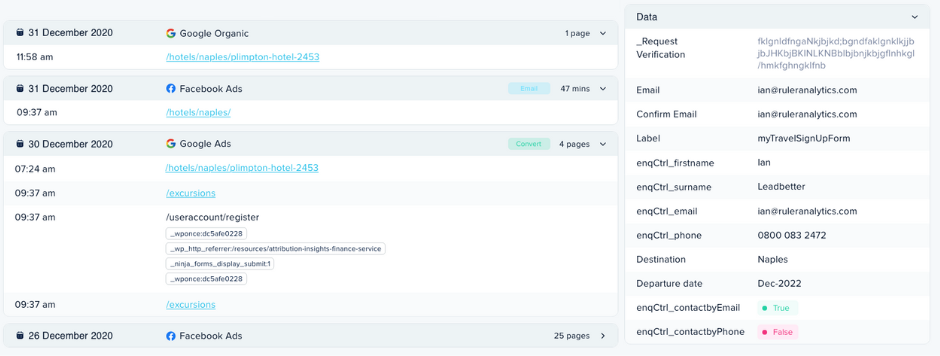
When that user becomes a lead, Ruler will pass all of the data held on that user over to your CRM or whatever you’re using to monitor leads and customers.
Ruler will continue to work in the background, monitoring that user and their activity.
When that lead closes into a deal, the revenue data is sent back to Ruler and assigned to the marketing and advertising touchpoints that contributed to the conversion.
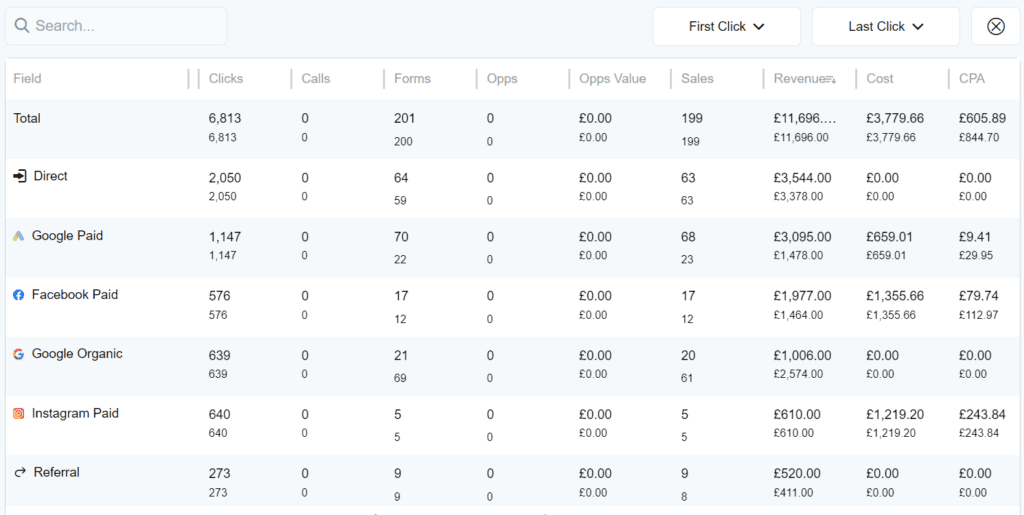
That means you can:
So, that’s clicks taken care of, but how about the reach of our Instagram posts?
Remember, impressions drive revenue too.
When unique identifiers are unavailable and Ruler’s deterministic tracking falls short, it turns to probabilistic attribution to fill the gaps.
Imagine a powerful algorithm that considers every impression, using advanced statistics and Shapley values. This lets Ruler connect those views to later conversions and sales, giving you a more complete picture.
Suddenly, you see the hidden value of non-click interactions. Upper funnel channels you might have dismissed now show their true impact on your bottom line.
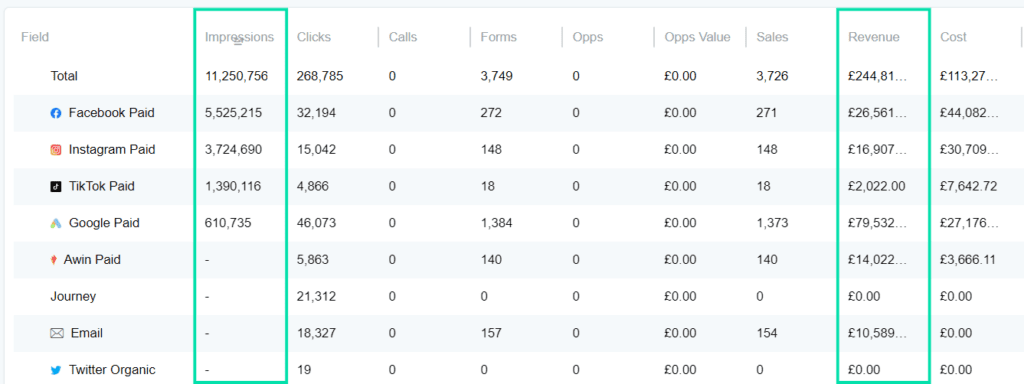
We won’t go into too much detail here since we already have a dedicated guide on Ruler’s probabilistic attribution. If you want to learn more, that’s the best place to start.
And there you have it.
Now, you can track Instagram traffic directly in Google Analytics and understand how the platform is working to drive or influence web visitors and conversions.
Don’t forget. By utilising tools like Ruler, you can gain more valuable insights into your advertising performance and make data-driven decisions that will help take your Instagram marketing to the next level.
